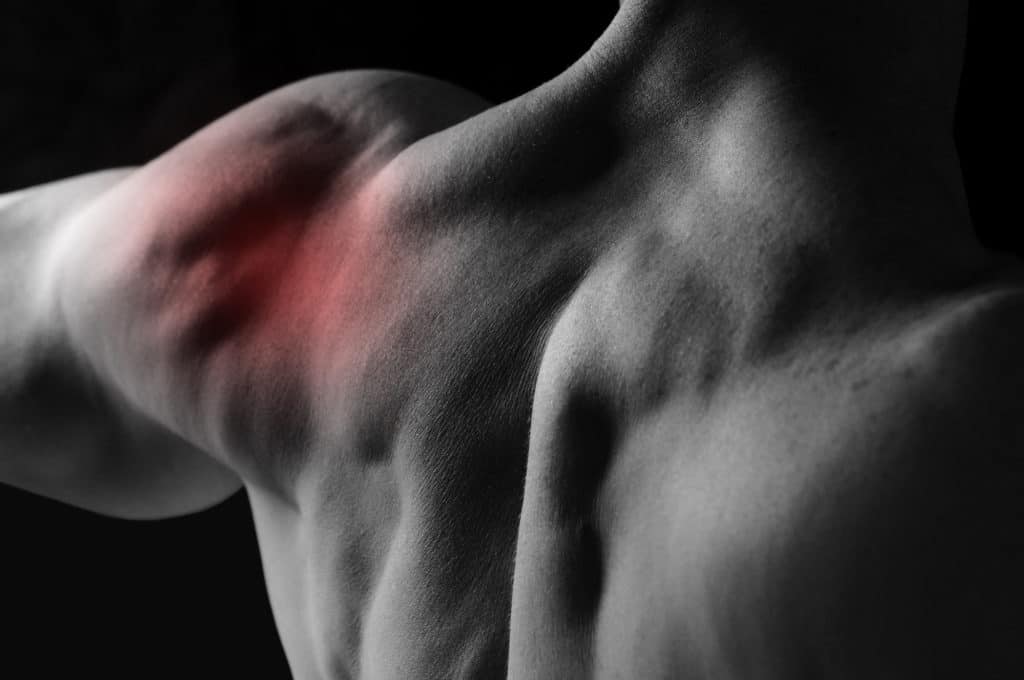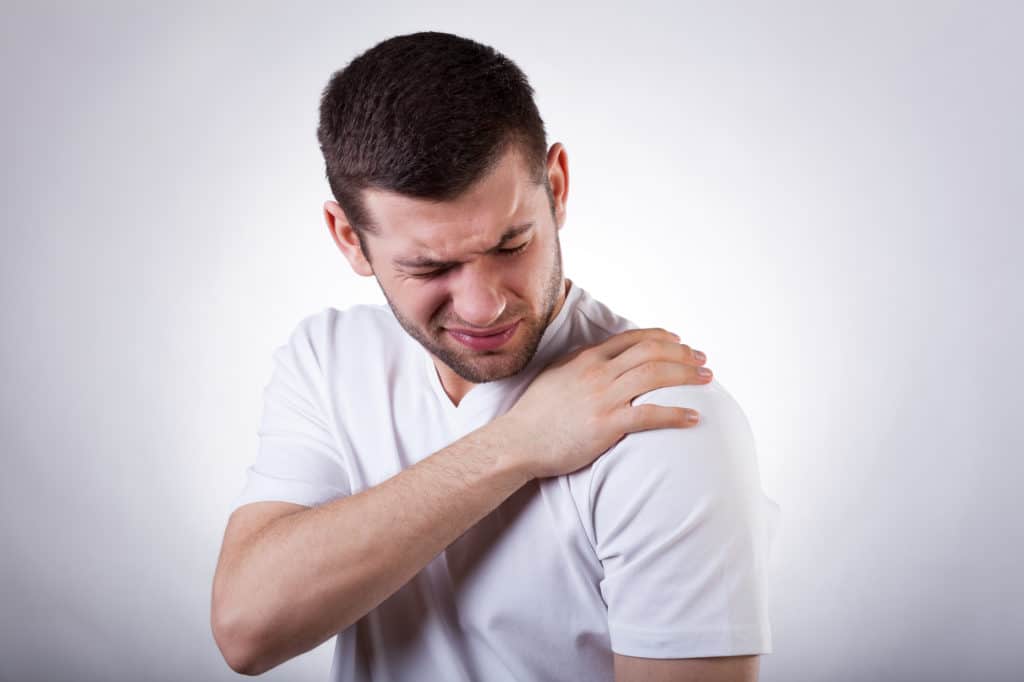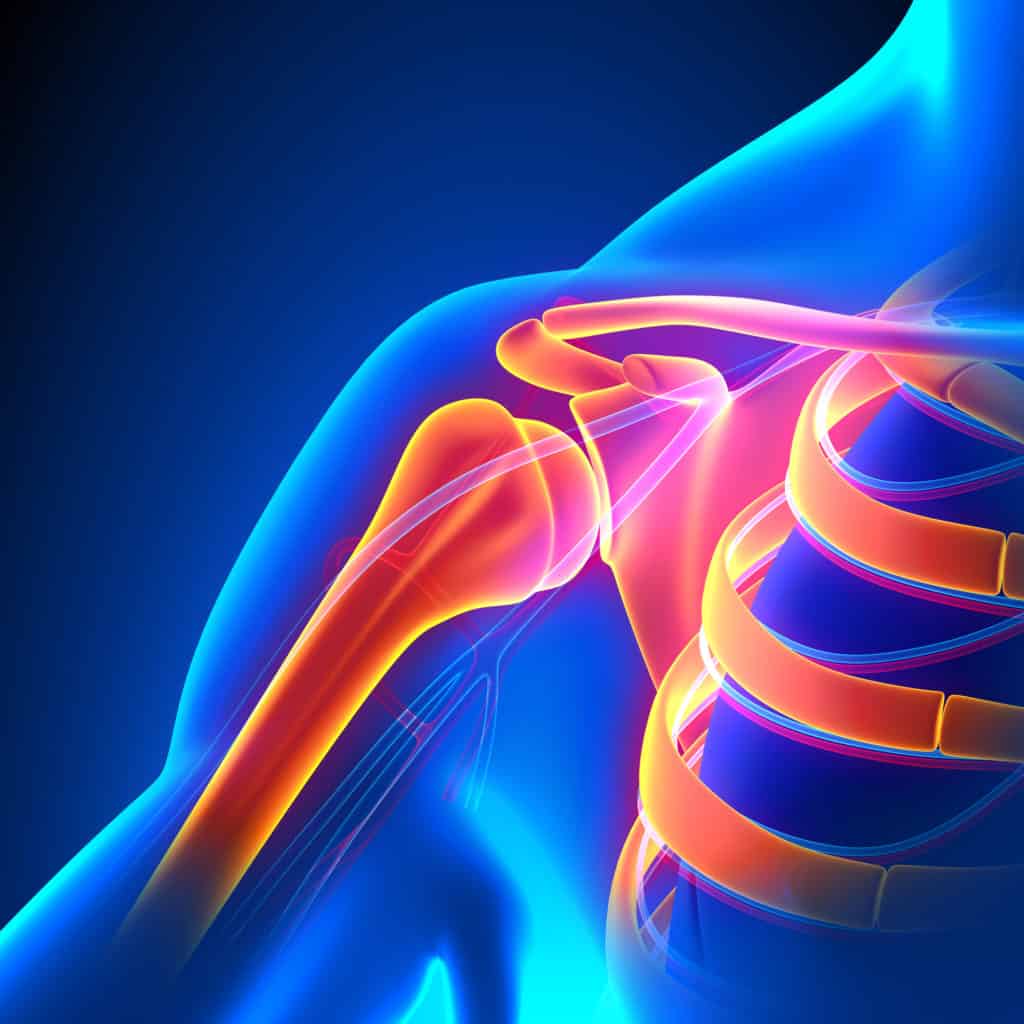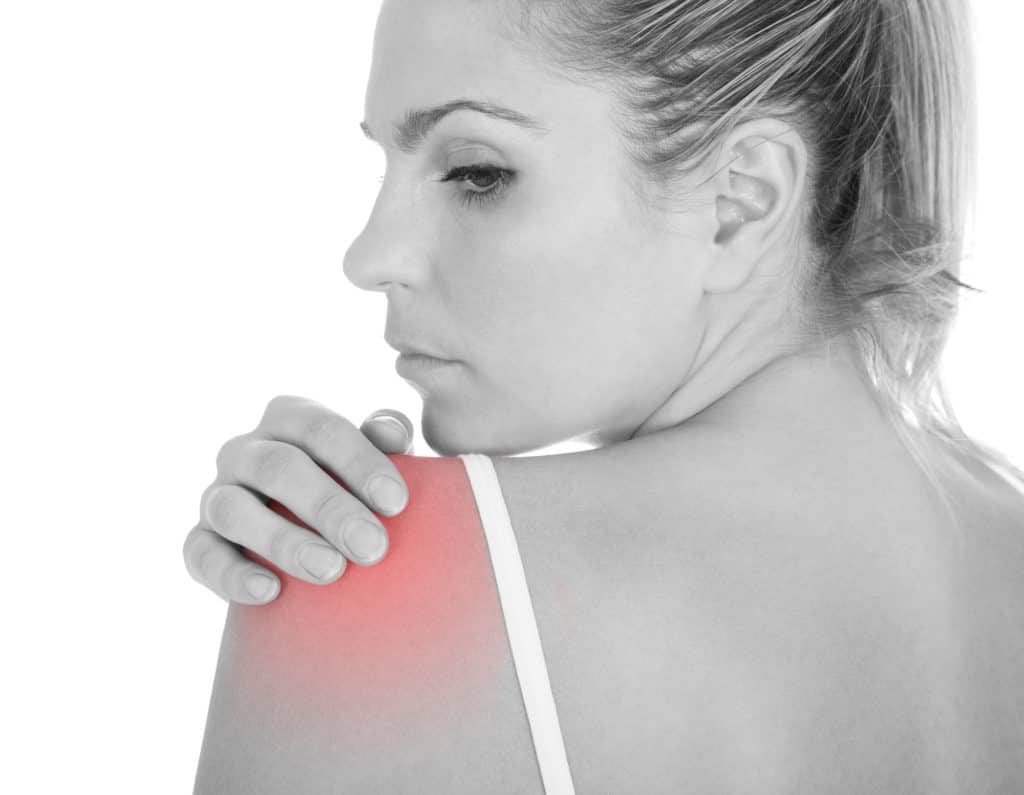Have you got shoulder pain that is affecting your quality of life?
Are you desperate for some relief from the pain and discomfort?
Experiencing shoulder pain is quite common among men and women, especially in older adults. But no two cases of shoulder pain are the same. So to treat your case effectively and relieve the pain, we need to find the root cause.
So, what’s the deal?
Have you had a recent accident, fall, or injury?
Maybe you have a diagnosis of arthritis or another relevant medical condition?
Or do you perform repetitive tasks at work that involve the shoulder joint?
If none of the above scenarios apply to you, then in your case, the pain you feel in your shoulder pain could be coming from another part of the body and what we call “referred pain.”
Inside the Shoulder Joint
The spot where the clavicle (collarbone), the scapula (shoulder bones), and the humerus (upper arm bones) meet is known as the “shoulder.” The humerus bones rest within the “socket” of the scapula on either side. The tendons and muscles known as the “rotator cuff” fix the shoulder in place. Its purpose is to cover and protect the upper arm bones and allow free movement of the arms.
Have You Got A Shoulder Injury?
The ball and socket joint in the shoulder facilitate a range of movements. Still, it is susceptible to instability and injury. For instance, it is much more liable to dislocation than any other joint inside the body. Plus, because we use our arms so much daily, the wear and tear and overuse can lead to injuries and tears in the ligaments, tendons, muscles, and connective tissues.
Here are some ways to help determine whether you have a shoulder injury:
-
- Is your shoulder sore and painful?
- Are you unable to move it?
- Can you lift and do other movements even though your shoulder hurts?
- Or is moving it impossible?
- Do you feel pressure on the joint as if it is ready to “pop” out of its socket?
If you think you might have a shoulder injury, it’s essential to get it checked by a physical therapist, but using heat therapy can relieve pain and inflammation in the meantime. If you combine heat therapy with rest, in time, most minor shoulder injuries get better on their own. However, your doctor or physical therapist might recommend a sling for support and ease the pain by limiting movement.
But there are some signs of a more severe shoulder injury that you should not ignore, including:
- Your hand or arm feels numb and/or weak
- You’re unable to lift or move your shoulder at all
- Your shoulder joint looks deformed or “out of place.”
- You have swelling and inflammation, and intense pain
If you have any of the above symptoms, you should seek emergency medical treatment because you may have a shoulder fracture or dislocation.
What Are The Most Common Causes of Shoulder Pain?
There are many potential causes of shoulder pain, so a professional evaluation to find and treat the root cause is essential because misdiagnosing yourself and attempting to treat it yourself could cause more problems and more pain.
But for information purposes only, here is a brief rundown of the most common causes of shoulder pain that we see in the Intecore PT clinic:
Fracture: The bones in the shoulder joint and other surrounding bones may develop a crack or break if hit or pulled hard enough. The humerus and clavicle are the bones that sustain the most fractures, in our experience. Shoulder fractures cause bruising and intense pain. Breaks and fractures require an X-ray to confirm. Still, the injury is visible – certainly to the trained eye. For example, a broken collar bone will cause the shoulder to sag.
Frozen Shoulder: Adhesions can form on the shoulder joint and restrict movement. It results in exactly what the name suggests – a frozen, stiff shoulder with limited movement. A frozen shoulder may happen because of surgery or pain, leading it to be used less than usual, which causes the adhesions.
Shoulder Bursitis: This condition occurs when the bursa is inflamed through repetitive movement and can also happen due to an injury or fall. Shoulder movement usually aggravates the pain of shoulder bursitis.
Shoulder Dislocation: With this condition, the shoulder joint gets dislocated and moves out of the socket if rotated excessively or pulled hard, leading to numbness and intense pain with inflammation.
Rotator Cuff Tear: The rotator cuff is a clump of tendons and muscles that holds the shoulder joint in place and allows the shoulder to move. The rotator cuff can get injured or experience wear and tear due to aging or because of an accident or injury. The symptoms usually include a crackling sound with difficulty moving in specific circumstances and lifting weights.
Separation happens at the joint where the shoulder blade and collar bone link together. The separation occurs due to a blow or fall that tears the ligament.
Cartilage Tear: The cartilage in the shoulder can tear due to repetitive movement over long periods or from a fall or impact. Cartilage tears restrict movement and can lead to weakness in the shoulder.
Impingement: Impingement of the shoulder joint occurs when the rotator cuff tendons are restricted by the shoulder bones, which leads to pain and swelling.
What Are The Other Causes Of Shoulder Pain?
Osteoarthritis: is one of the more common degenerative forms of arthritis. It can affect any bones and joints in the body, including the shoulder joint. When osteoarthritis causes the cartilage in the shoulder to break down, the bones then rub against each other – resulting in inflammation and pain.
Bone Spurs: Sometimes, small bones pieces – referred to as osteophytes, cause wear and tear on the rotator cuff joint and restrict shoulder movement. This condition can also cause rotator cuff tears or tendonitis.
Heart attack: Occasionally, shoulder pain can be a warning sign of a heart attack. But it is likely to be accompanied by restricted breathing and tautness in the chest. You should call 911 for emergency medical attention if you have these symptoms.
Rheumatoid Arthritis: Unlike osteoarthritis caused by wear and tear, in Rheumatoid Arthritis, the body’s immune system damages the joints, leading to stiffness and pain. Rheumatoid Arthritis often affects the shoulder joints but is usually accompanied by visible swelling, inflammation, and pain.
Shoulder Tendinitis: This painful condition is caused by rotator cuff tendons becoming inflamed due to any injury or gradually over time.
Referred pain: As we mentioned earlier, shoulder pain may not be an issue with the shoulder at all. It could be coming from a completely unrelated area of the body referred to and “felt” in the shoulder.
How To Find The Root Cause of Shoulder Pain
When you visit a physical therapist, we usually conduct a thorough physical exam to check for structural issues and for anything related to the back or spine that may be causing shoulder pain. We also check your flexibility, strength, and range of motion. We do this by asking and, in some cases assisting you to perform specific arm movements.
Sometimes, we may need additional medical tests to get an accurate diagnosis or confirm our suspicions. For example, in the case of shoulder pain, these tests can include:
Arthroscopy is a type of surgery involving a tiny fiber-optic camera inserted into the shoulder to get a clear image of what’s causing your shoulder pain. In certain circumstances, your surgeon may treat the issue simultaneously.
MRI Scan: This involves using a powerful magnet and radio waves to get detailed images of the inside of your shoulder joint.
CT Scan: Multiple X-rays are taken in different positions. When collated, we get a better idea of the shoulder condition affecting your shoulder.
X-rays: Helps us identify the cause the specific cause of your shoulder pain – as is the case with arthritis, bone spurs, or other issues causing pain in the shoulder. To get a clearer picture, we might recommend getting an arthrogram, a process where dye is injected to get better details.
EMG (Electromyography): The muscles and nerves in the shoulder are stimulated to check for electrical activity issues.
How To Treat Shoulder Pain AT Home
The short answer is don’t. You need a professional.
In fractures, separations, or dislocations, you need medical assistance to reset the bone in place or fit you with a sling to make sure the bones heal correctly, and you have no long-term issues. A doctor may also prescribe painkillers and anti-inflammatory medications like corticosteroid injections into the shoulder joint to reduce swelling and alleviate pain.
In severe cases, rest and medication might not be enough, and you may need surgery as the best way to relieve your shoulder pain.
However, if you have more chronic pain or a minor injury that isn’t due to a severe accident or injury, then physical therapy can help you relieve the pain quickly and effectively—no messing.
Book your free consultation now through our contact page.
- 5 Ways to Treat Chronic Back Pain Without Surgery - July 21, 2024
- 10 Back-Saving Tips for Gardening This Summer - July 14, 2024
- 5 Sciatica-Friendly Travel Tips for Your Summer Vacation - July 7, 2024




















